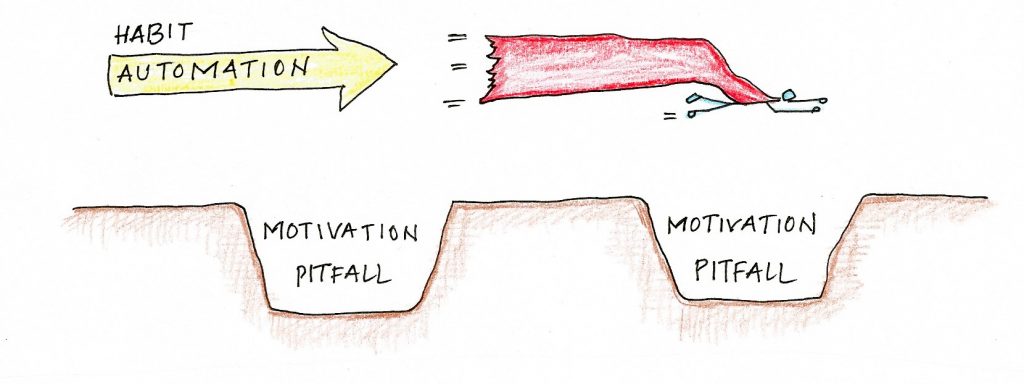Question: It seems that it is easier to muster up the motivation to work towards a concrete short term goal; a 30 day fitness challenge or training for a half marathon etc. But how is it so much harder to maintain motivation to go to the gym week after week for the whole year? Is it beneficial to always have a “fitness goal” in mind or can one maintain motivation for fitness without a goal?
If you need to use anything beyond a minimal motivation to go to the gym on a regular basis, you don’t have a habit. That’s pretty normal, most people don’t have gym habits, or they oscillate between having a habit and falling out of the habit.

The goal of creating a gym habit is to make going to the gym such an unthinking part of your life that you don’t really consider it. It’s just something you do.
Getting to that point takes time. Part of it is strictly habituation—you need to go to the gym consistently enough for a long enough period of time in relatively the same way so that it will feel automatic. I found 30-day trials to be a good kick-off for a habit, but in truth making a habit totally automatic may take months or more. The other part is that gym habits, like most habits, are meta-stable. This means that it’s always easier to not do them than to do them, so while they can be stable for a long time, they’re also prone to collapsing if something from the outside disturbs them.

Fitness goals and other short-term projects can inspire action, but they also risk failing to habituate your habit sufficiently. You can get excited to work out for a month, but what about a year? A decade? That requires long stretches where you exercise without thinking about it much, which in turn requires a habit that’s pretty deep.
My advice when starting any goal like this is to begin with the actions and habits you want to create and only once those have been established aim for making more specific improvements. This could be a gym habit, or it could be a writing habit, language learning habit, programming habit or meditation habit. Once you figure out the kind of habit pattern you want, you can then start thinking about what kind of specific targets you want to reach or improvements you’re after.

 I'm a Wall Street Journal bestselling author, podcast host, computer programmer and an avid reader. Since 2006, I've published weekly essays on this website to help people like you learn and think better. My work has been featured in The New York Times, BBC, TEDx, Pocket, Business Insider and more. I don't promise I have all the answers, just a place to start.
I'm a Wall Street Journal bestselling author, podcast host, computer programmer and an avid reader. Since 2006, I've published weekly essays on this website to help people like you learn and think better. My work has been featured in The New York Times, BBC, TEDx, Pocket, Business Insider and more. I don't promise I have all the answers, just a place to start.